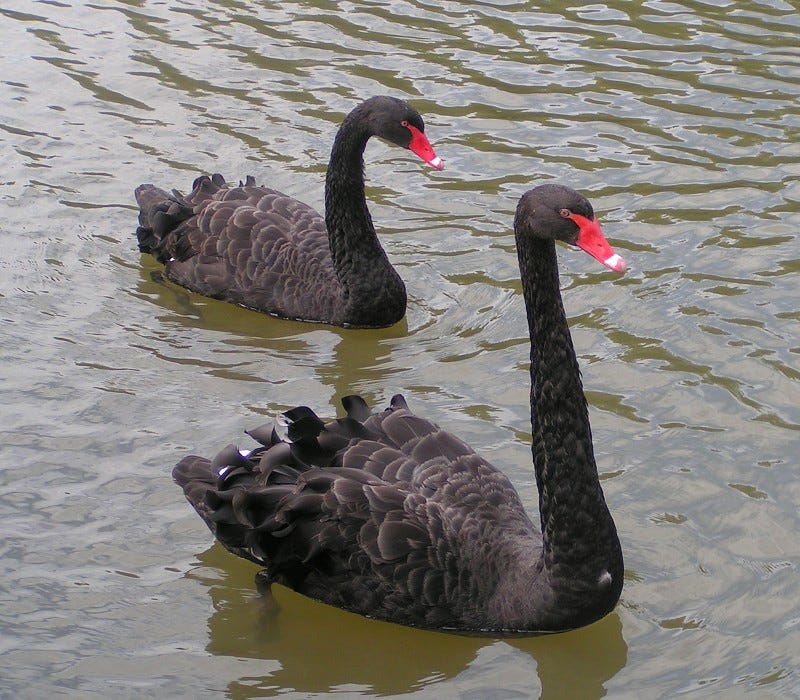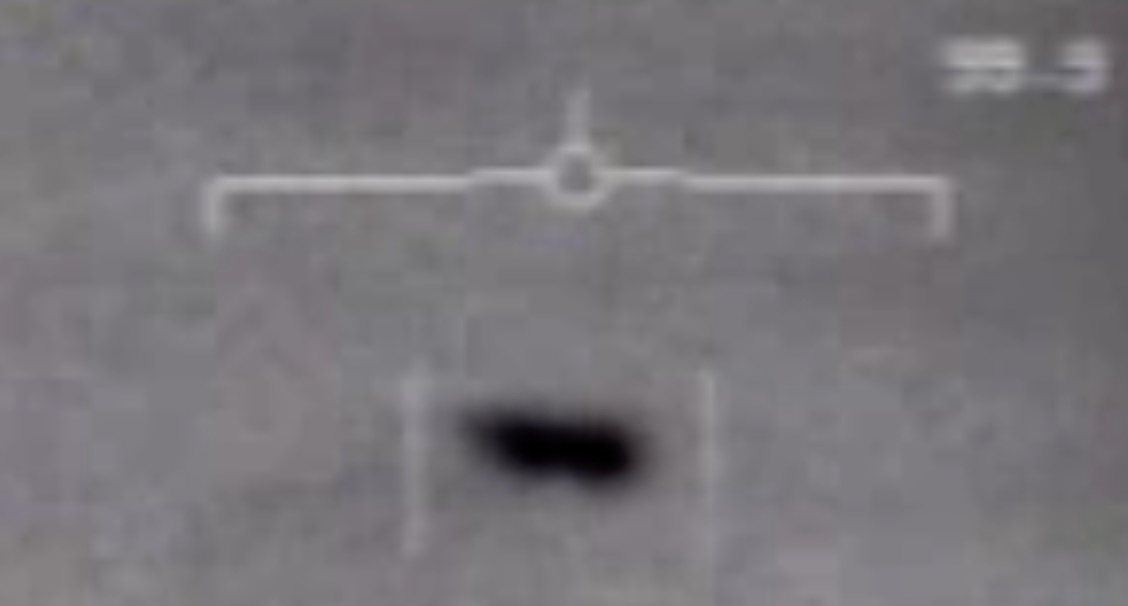The Grey Birds
Ufology needs to produce only one Black Swan to demonstrate that UFOs are beyond human technology. But so far all we have is a flock of Grey Birds.
Ufologists are very fond of referencing Thomas Kuhn’s The Structure of Scientific Revolutions, a 1962 book that describes a common process in the evolution of scientific paradigms. The current science of a time seems fixed and resistant to major change. Data that does not fit the prevailing model is either ignored or made to fit that model somehow. Eventually, under Kuhn’s process, the weight of new evidence means that the model becomes untenable; there’s a revolution as a new model is adopted, and then things settle down again.
A simpler way of looking at it, and another popular reference for ufologists, is a quote attributed to Arthur Schopenhauer:
“All truth passes through three stages. First, it is ridiculed. Second, it is violently opposed. Third, it is accepted as being self-evident.”
Even simpler, and perhaps getting to the more personal heart of the matter, is a quote attributed to Gandhi:
“First, they ignore you, then they laugh at you, then they fight you, then you win.”
Ufologists are looking for that win. They want a scientific revolution, and they want validation. They want the new model of reality to include what they believe to be true; that some currently unidentified objects flying around in the sky are piloted by a “Non-Human Intelligence” (NHI). Essentially: piloted by aliens.
What they need for that win is a Black Swan.

The black swan is another popular reference amongst those who seek to break the mold of science. In its original form, the black swan is an unambiguous counterexample that (if it exists) proves the prevailing accepted norm to be incorrect. The possible existence of a black swan is similar to the property of scientific theories called falsifiability, which means that there is a way in which the theory can be proven to be incorrect. The classic example is the theory that all swans are white, which in the early 1700s was the mainstream view. That theory could have been falsified at any time, just by the discovery of a single black swan. The science of swans underwent a tiny revolution when black swans were discovered in Australia, and now we have a new paradigm.
The black swan of ufology is an unambiguously non-human flying craft. For example, a flying saucer with an alien inside it landing upon the White House lawn. But that, of course, is a silly example. It’s also somewhat putting the cart before the horse. Ufology seeks to upend the conventional explanation of UFOs. The conventional explanation is that UFOs are probably all mundane objects, things like balloons, birds, jet planes, drones, optical illusions, misperceptions, hoaxes, natural phenomena, camera artifacts, and instrument errors.
Before were get into pondering the possibility of alien UFO pilots, ufology first has to demonstrate that at least one UFO is not mundane. The black swan required to disprove the mundane hypothesis is something that unambiguously does not have a conventional explanation, something that is unambiguously anomalous.
Easy! The ufologists will cry; we already have that in spades. Didn’t a craft near the USS Nimitz drop from 28,000 feet to sea level in 0.78 seconds? Didn’t David Fravor have a slow dogfight with a Tic-Tac-shaped craft with no visible means of propulsion? Don’t the Gimbal and GoFast videos show impossible physical behaviors? Didn’t pyramids swarm a US warship? Didn’t both recent UAP reports from the government describe craft doing non-human things? Do we not have a whole flock of black swans?
If there’s one thing that ufology is not lacking, it’s evidence. People see, photograph, and take videos of UFOs every day. Online databases like MUFON store tens of thousands of examples. Each day new cases crop up on social media. We’ve even got some videos from the US Military, some officially released and some supposedly leaked.
But these are not black swans. A clue as to why not is that there are so many of them. A disproof of the all-swans-are-white hypothesis needs only one clear counterexample. You only need one black swan. Ufology needs only a single ace to win the game. But if you can’t pick the best example from the thousands available and say, “this is unambiguously anomalous” like you can say “this swan is black,” then you don’t have a black swan. You have a collection of grey birds.
A grey bird is something that appears anomalous, but you can’t really say for sure. It’s something that would be a black swan, if only you could get a better picture of it. But it’s not. It’s a story, or a blurry photo, or a video of a fuzzy blob, or something behind a bokeh, or a white cigar that looks curiously like a distant plane.
We describe such examples as being in the LIZ, the Low Information Zone, which is that region or set of circumstances in which something is just too far away, out of focus, blurry, small, fast, or low resolution to make out exactly what it is. UFOs invariably exist in the LIZ, so much so that many point to this as a strong indication that UFOs are probably mundane. Get a better camera, and the UFOs will recede until they are just too far a way to make out what they are.
The presence of the LIZ is ubiquitous in ufology. Both UAP reports obliquely refer to it, with the first saying:
“The limited amount of high-quality reporting on unidentified aerial phenomena (UAP) hampers our ability to draw firm conclusions about the nature or intent of UAP”
And the second UAP report concurred:
“Regardless of the collection or reporting method, many reports lack enough detailed data to enable attribution of UAP with high certainty.”
The second UFO report did improve greatly on the first in that it actually did manage to attribute many UAP with high certainty. They turned out to be balloons, drones, and other airborne clutter. That’s another aspect of the LIZ, when you do get things out of it far enough to identify them then they invariably, in all of human history, have turned out to be mundane, just white swans. We only need one black swan, but it’s astonishingly elusive.
The objects of interest, the grey birds that might be black swans, remain firmly inside the LIZ —the Low Information Zone.
Perhaps the best example of grey birds is with the Nimitz “Tic-Tac” incidents.
The Nimitz incident consists of three significant components. Firstly, there’s reports of anomalous radar reading by Kevin Day, then there’s an account of an encounter with a “Tic-Tac” shaped object by David Fravor and Alex Dietrich, and finally there’s a short fuzzy video of an indistinct distant flying object taken an hour later, by Chad Underwood. If these were all high quality data and if it could be shown that they were all the same thing, then we might have something. But unfortunately, we only have memories of what was on the Radar, no actual data. The eyewitness accounts of Fravor and Dietrich sound impressive, but they are inconsistent (Fravor says the encounter was five minutes, Dietrich says ten seconds), and not definitively linked to the radar other than being roughly in the same location. Similarly with the video, which shows an irregularly shaped object, and not one doing anything particularly odd, it’s not clear if there’s a real link to earlier events. It’s not a black swan, but a collection of grey birds.
We could go through the other cases. But the Nimitz is perhaps the best, and that isn’t a black swan. The others are lesser, duller, birds. The “Gimbal” video looks like a camera artifact, the craft behind it is unknown, in the LIZ. “Go Fast” isn’t going fast, it’s indeterminate, but hardly anomalous. The “Omaha sphere” is just something hot that sinks below the horizon. The “pyramids” buzzing the USS Russell were not pyramids, just unidentified drones and misidentified stars.
Case after case, grey bird after grey bird.
Why “grey birds”? Why not grey swans? Even saying “swans” here gives the cases more definition than they deserve. These fuzzy images and recollections are indistinct, inaccurate, indeterminable. Not black swans, we don’t even have enough information to know if they are swans at all. Is that an aircraft? A balloon? A bird? The LIZ is merciless in its obfuscation. In the hunt for that one black swan that will trigger a scientific revolution, a flock of grey birds is the best we can do.






Great post, Mick!